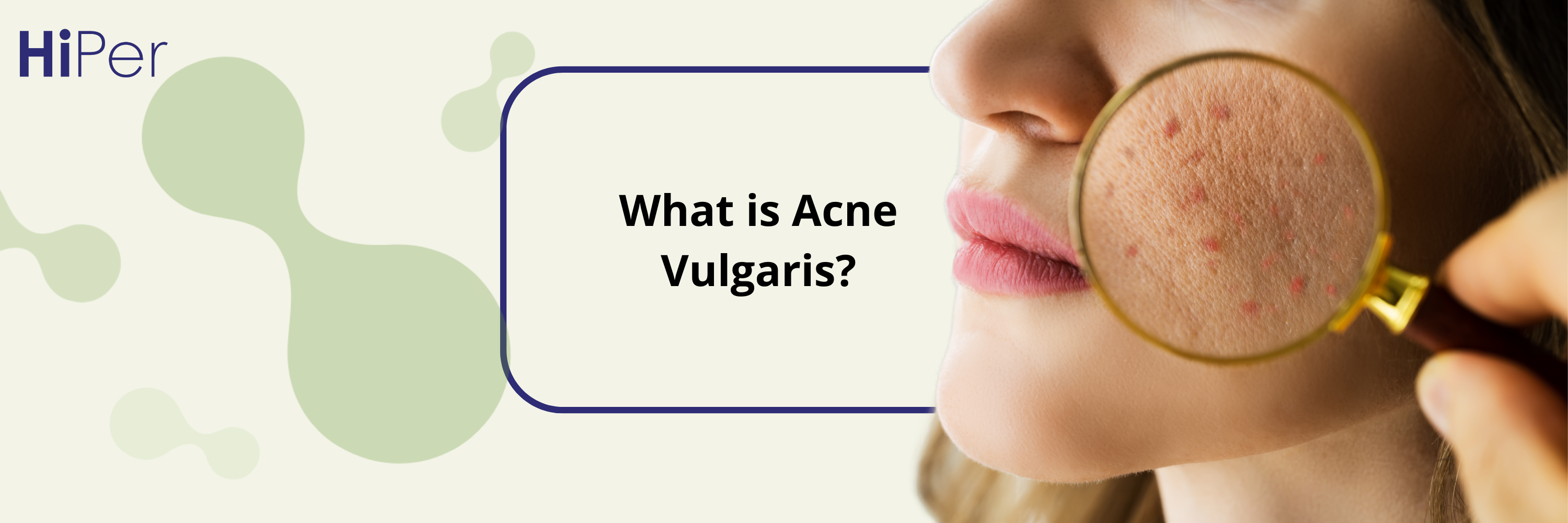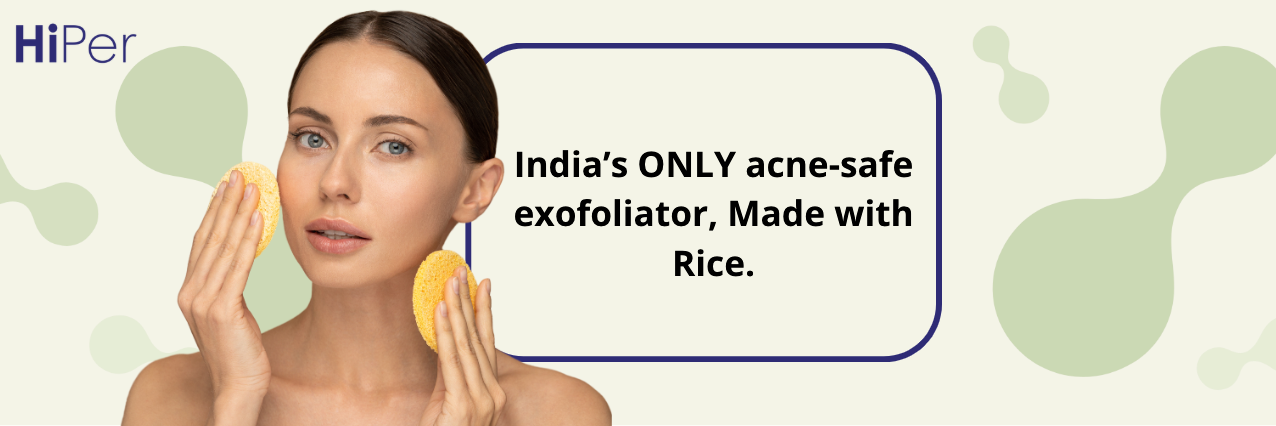
What is Acne Vulgaris? Causes, Types & Best Treatments for Clear Skin
Acne vulgaris — the most common type of acne — affects up to 85% of people at some point. It’s more than just an occasional pimple; it can deeply impact your confidence and skin health. At HiPer, we break down what acne vulgaris really is, what causes it, and the most effective ways to treat it — with science-backed skincare made just for acne-prone skin.
🔬 What is Acne Vulgaris?
Acne vulgaris is a chronic inflammatory skin condition that occurs when hair follicles become clogged with oil (sebum), dead skin cells, and bacteria. It typically appears as:
-
Whiteheads (closed comedones)
-
Blackheads (open comedones)
-
Papules (red, inflamed bumps)
-
Pustules (pimples with pus)
-
Nodules and cysts (painful, deep lesions)
It most often shows up on the face, chest, back, and shoulders.
🧪 What Causes Acne Vulgaris?
Several factors contribute to acne vulgaris:
-
Excess oil production from overactive sebaceous glands
-
Abnormal shedding of dead skin cells, which leads to clogged pores
-
Overgrowth of acne-causing bacteria (Cutibacterium acnes)
-
Hormonal changes (especially during puberty, periods, PCOS, etc.)
-
Inflammation triggered by internal or external stressors
Genetics, diet, stress, and improper skincare also play a role.
📋 Types of Acne Vulgaris
Understanding your acne type helps you treat it better:
| Type | Appearance | Cause |
|---|---|---|
| Whiteheads | Closed clogged pores | Oil + dead skin |
| Blackheads | Open pores with black surface | Oxidized oil |
| Papules | Small red, inflamed bumps | Inflammation |
| Pustules | Red bumps with white pus | Bacteria + inflammation |
| Nodules | Large, painful under-skin bumps | Deep inflammation |
| Cysts | Pus-filled, painful lumps | Severe infection & hormonal imbalance |
💊 Best Treatments for Acne Vulgaris
✅ Gentle Cleansing (Don’t Overdo It)
Use a non-stripping cleanser to remove excess oil and dirt without damaging your skin barrier. Harsh scrubs or alcohol-based cleansers? Skip those.
-
Controls oil production
-
Kills acne bacteria
-
Soothes inflammation
-
Safe for sensitive skin
-
Supports the skin microbiome
-
Gently exfoliates without stripping
-
Water-activated powder texture
-
Microbiome-safe and brightening
✅ Active Ingredients that Work
-
Salicylic Acid: Unclogs pores & reduces oil
-
Zinc PCA: Fights bacteria, calms skin, reduces pigmentation
-
Niacinamide: Brightens and strengthens the barrier
-
Succinic Acid: Fades marks, stops future breakouts
✅ Biotic Skincare
Support your skin microbiome with prebiotics, postbiotics, and probiotics to reduce inflammation and prevent relapses.
✅ Dermatologist Support
Severe or cystic acne? Consult a derm. Prescription treatments like retinoids, oral antibiotics, or hormonal therapy may be needed.
🧴 HiPer’s Biotic-Powered Routine for Acne Vulgaris
-
HiPer Sulfur Cleanser: Deep clean without drying
-
HiPer Zit Succinic Acid Spot Gel: Calm active pimples fast
-
HiPer Post Breakout Zinc Serum: Fade marks & support recovery
-
HiPer Tazman Pepper Ceramide Moisturizer: Hydrate & balance the skin barrier
-
HiPer Rice Microfoliant: Exfoliate safely and brighten skin
✨ Final Thoughts
Acne vulgaris is common — and manageable. With gentle cleansing, microbiome-friendly care, and smart actives like sulfur, zinc, and succinic acid, clear skin is possible. Don’t just treat the surface. Support your skin’s long-term health.
🔗 Ready to begin? Explore HiPer’s full acne-safe range.


